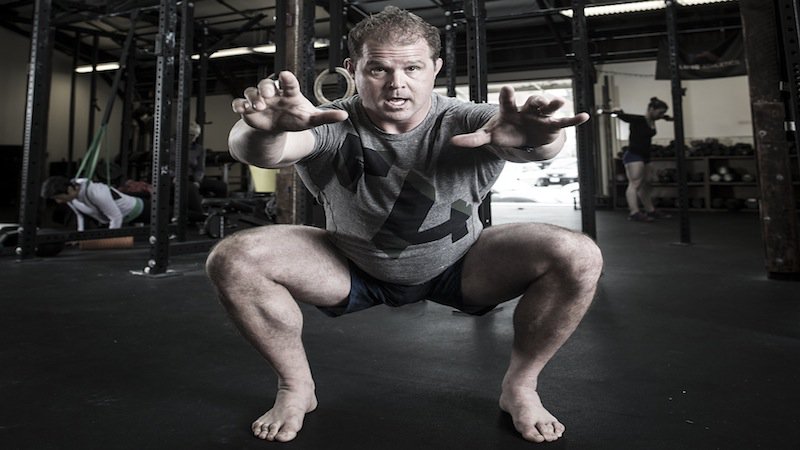Kelly Starrett, a Doctor of Physical Therapy and CrossFit coach, is one of the most influential men in the field of mobility. He is the author of Becoming a Supple Leopard: The Ultimate Guide to Resolving Pain, Preventing Injury, and Optimizing Athletic Performance, Ready to Run, and Deskbound: Standing Up to a Sitting World, as well as the founder and operator of MobilityWOD, an online database full of educational videos for improving and maintaining the ability to move throughout the natural ranges of human motion. These are all very important works of literature that can help anybody from the elite athletes to the weekend warriors help prevent injury and optimize physical performance.
Starrett’s kinesiology expertise can teach somebody the ideal ways to improve something as simple as hamstring stretching, to the pose methods of barefoot running, to proper execution of complex Olympic lifts like the clean and jerk, with specific instructions explaining how every joint from head to toe should be situated and moved to employ optimal power and minimal risk of injury. I invest a lot of personal interest in the teachings of the Supple Leopard himself. I own all three of his books and have taken the time to view a large handful of his MobilityWOD videos on YouTube. I could go on and on for hours about the lessons I’ve learned about the mechanics of human movement and the common reasons why most people can no longer achieve certain movement patterns that they were born fully capable of achieving.
Although I wish I could teach the world every bit of information I’ve acquired throughout my years of research, I know that most people either don’t care enough or don’t have the attention span to read an article so lengthy. So instead I want to explain one movement. One single movement that is so crucial to us as humans, yet nearly everybody lacks the ability to execute to some degree.
During an interview on The Tim Ferriss Show podcast, Starrett was asked what he thought was the single most important orthopedic test that every person should be able to pass. His answer: the Ten-Minute Squat. He stated that every human being is born with and should maintain the functional capacity to drop down into a perfect squat and stay there for at least 10 minutes, followed by an effortless ability to stand right back up. Toes should be pointed forward (or no less than 10 degrees flared out), feet should be shoulder width apart with 80% weight on the heels, and your back completely flat. Given my background as a powerlifter who placed minimal focus on flexibility in the beginning of my training, I don’t have 100% of the mobility that I should have as a human being, but I definitely come closer to my goal everyday with consistent practice. Here’s what I look like today sitting in my Paleo Chair:
Ten minutes is a long time. It’s even longer when you’re deep in a squat, your ass is burning, and you’re checking the time every thirty seconds. Pro Tip: do a little people-watching out the window from the fourth floor of your buddy’s apartment.
Go ahead and give the squat test a try. Did you fail? Were you able to execute perfect form from the start? What parts of your body started burning the most? Your shins, your knees, your low back, the front of your hip? Unless your glutes were the primary muscles in pain, you have some work to do. So pay close attention to these details, because these hotspots are telling a story about your physique – muscles that have fallen behind and atrophied while the rest of your body developed over the years, the joints that simply won’t bend or hinge or twist as far as they should, the fascia or ligaments or other musculoskeletal tissue that have become adaptively shortened or chronically lengthened (which is just as bad) due to poor movement patterns and poor posture. This squat test just gave you insight into the future. These hotspots, or your utter inability to even fall into a squat from the get-go, will one day manifest into something much more serious.
Unless you can travel with good movement patterns and ease into one of the most primitive positions that even a toddler has no problems executing, you will always be at risk for totally preventable injuries. Injuries don’t just occur as freak accidents during a pickup game of basketball amongst 40-year old men. 80-90% of you will suffer from low back pain at some point in your lifetime. Read that number again. 80-90%! And that is just low back pain. Want to know the easiest way to remain in that 10-20% range? Learn to squat.
TJ Williamson
B.S. Kinesiology | NSCA-Certified Personal Trainer




